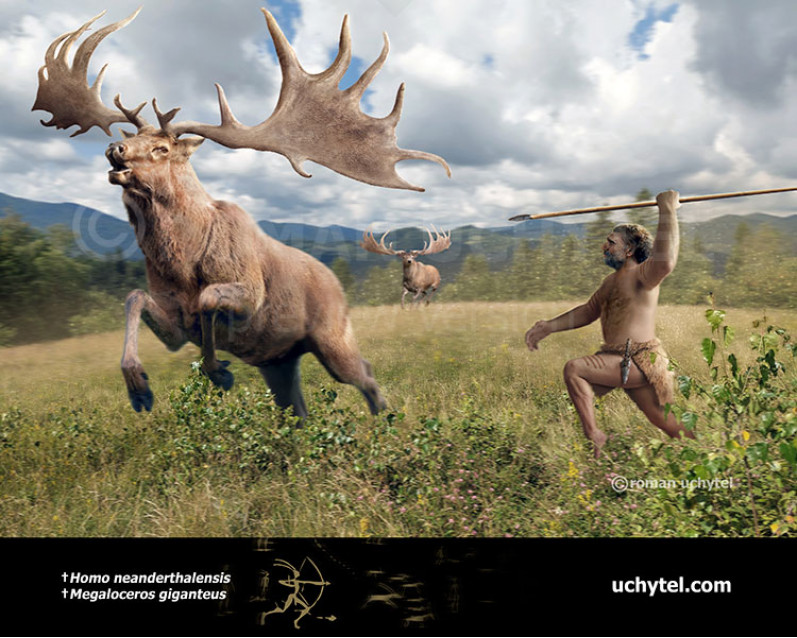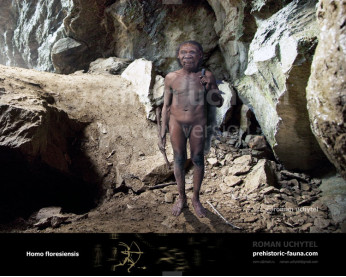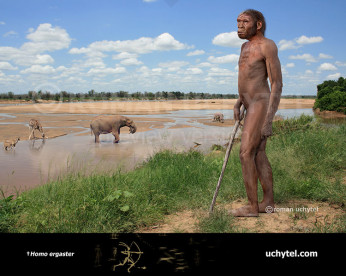Homo neanderthalensis and Megaloceros giganteus (Irish elk)
128128Neanderthal (Homo neanderthalensis King, 1864)
Order: Primates
Family: Hominidae
Dimensions: height - 170 сm, weight ~ 90 kg
Temporal range: during the late Pleistocene (from Western Europe to Central and Northern Asia)
The Neanderthal is a fossil species of a man who lived 140-24 thousand years ago, according to the present state of knowledge, partly is the ancestor of modern people. The name «Neanderthal» occurs from the Neanderthal gorge (near Dusseldorf), where in 1856 the first skull was found. The average height of the Neanderthals was about 170 cm, but they were distinguished by a stocky physique, and by the volume of the cranium (1400-1740 cm³) they even surpassed Homo sapiens. The Neanderthals had very developed superciliary arches, forming an almost continuous roll; massive lower jaw, almost without chin; large wide nose and large teeth. Muscle mass is 30-40% larger than that of Cro-Magnon and heavier than the bones of the skeleton, confirming the good adaptability to the harsh conditions of the subarctic climate.
Neanderthal (Homo neanderthalensis King, 1864)
Order: Primates
Family: Hominidae
Dimensions: height - 170 сm, weight ~ 90 kg
Temporal range: during the late Pleistocene (from Western Europe to Central and Northern Asia)
The Neanderthal is a fossil species of a man who lived 140-24 thousand years ago, according to the present state of knowledge, partly is the ancestor of modern people. The name «Neanderthal» occurs from the Neanderthal gorge (near Dusseldorf), where in 1856 the first skull was found. The average height of the Neanderthals was about 170 cm, but they were distinguished by a stocky physique, and by the volume of the cranium (1400-1740 cm³) they even surpassed Homo sapiens. The Neanderthals had very developed superciliary arches, forming an almost continuous roll; massive lower jaw, almost without chin; large wide nose and large teeth. Muscle mass is 30-40% larger than that of Cro-Magnon and heavier than the bones of the skeleton, confirming the good adaptability to the harsh conditions of the subarctic climate.





-346x277.jpg)



